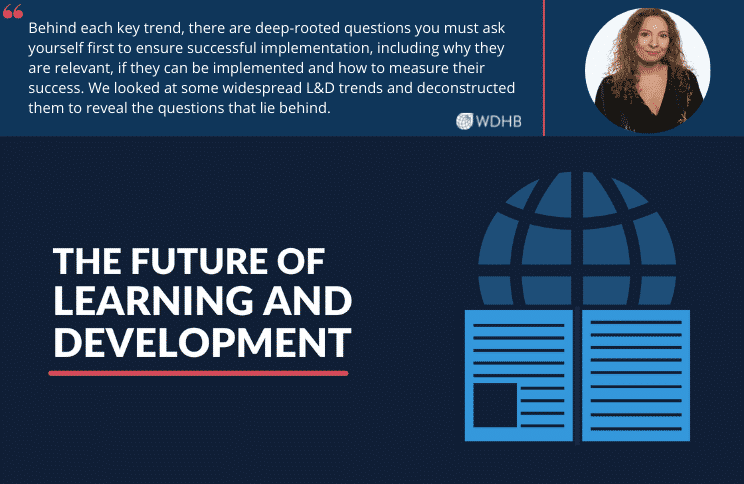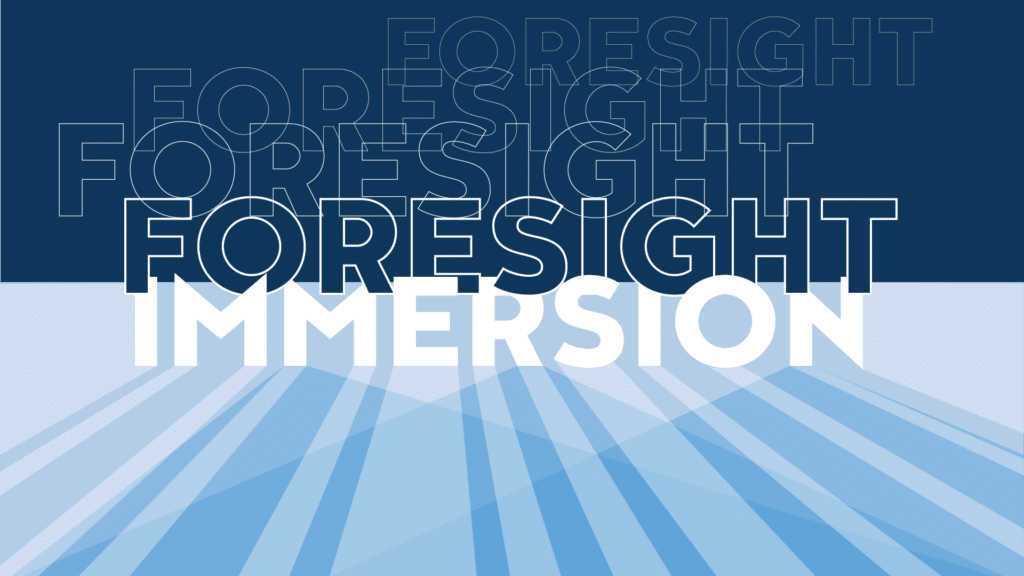Future Of Learning And Development In Organization

“What? You don’t have an LXP? You don’t do micro-learning?” Leaders are often faced with these questions without seeing how the choices of technologies or delivery formats for L&D programs are highly dependent on an organization’s culture, infrastructure, and the learners’ needs. Behind each key trend, there are deep-rooted questions you must ask yourself first to ensure successful implementation, including why they are relevant, if they can be implemented and how to measure their success. We looked at some widespread L&D trends and deconstructed them to reveal the questions that lie behind.
Trends of Future of Learning And Development
While L&D professionals must keep up the pace with these trends, it is equally, if not more, important to explore the conditions that can make them happen. With a clear end goal in mind, leaders grasp the concept of acting with purpose. If you are willing to dig deeper with these future trends in L&D, your teams will make choices that count:
Personalized/Individual Training
Personalization is easier said than done. All leaders have noticed their team members’ diverse learning profiles and skill gaps, and they likely understand that this brings about the need for content personalization and various delivery formats during training. Most companies are beginning to gather solid sets of data through learning analytics and Individualized Value Proposition (IVP). Although, this data must be met with a balance between adapting to learners’ needs and addressing the needs of the organization itself. Leaders, like anyone, don’t know what they don’t know, which requires L&D to play a proactive role in your organization to avoid competency gaps. Understanding what and why personalized training is necessary before implementing solutions to unforeseen problems will allow you to better cater to the learners’ needs, and thus, to your organization as a whole.
Using Collaborative Learning Tools
At WDHB, we believe in the power of collaborative or peer training. The power of peers to contextualize learning, update it and make it comprehensible is unmatched. However, oftentimes, organizations struggle with implementation as they tend to fall into one of two possible traps:
- They codify excessively, making peer training more formal than traditional training. Employees begin to perceive this learning style as a job in itself, which takes away the informal dimension that supports contextualization and appropriation.
- They go in the complete other direction, believing that because it is a social and collaborative method, there is no need to provide structure. This misunderstanding that collaborative learning will happen “magically” results in minimal amounts of active users and low participation with a lack of direction.
L&D leaders must prepare learners for social learning by training trainers, creating formal opportunities for peer training and ensuring there is room for innovative thinking before expecting to see the results of this strategy.
Bite-sized and Micro-learning
Bite-sized and micro-learning have become the biggest buzzwords in L&D for nearly 10 years. While these methods have been scientifically proven to help with knowledge absorption and retention, micro-learning is not a strategy. Leaders often see this method as an easy fix to accommodate busy lives and shorter attention spans, but it is not the best (or only) way to learn. This trend is a great supplement to L&D journeys and can help team members grasp smaller bits of knowledge. Although, it is integral to provide other upskilling programs that accommodate complex skill development and allow for experimentation. For example, the experiential learning cycle brings valuable skill sets to the forefront. This method involves having an experience, reflecting upon it, conceptualizing what’s behind it and then putting the learning into practice, but it is a process that cannot fit into the short cycles of micro-learning. While the benefits of micro-learning are valuable, it is important for organizations to assess their needs before jumping into this learning trend. Some solutions may require longer time commitments and more in-depth analysis, but they could be the final puzzle piece in completing your organization’s big picture.
- Learning Experiences
Organizations’ willingness to invest more heavily in the learner’s experience has proven to be game-changing. While the importance of content creation remains, teams that have an awareness on how to articulate organizational development that fosters learners’ growth are on the right path. At WDHB, we are thrilled that the rise of Learning Experience platforms has brought about boundless growth for teams. By focusing more on content aggregation and curation, L&D teams have designated time and resources for more strategic work that leads to future-proof success.
Conclusion
It is great to pay attention to and keep pace with trends because they are also a matter of employer branding, talent attraction and employee upskilling. However, our advice is to not succumb to trends without asking some questions first:
- How does it fit in my L&D agenda?
- Which user needs does this solution address?
- Do I have the right infrastructure (technically AND organizationally)?
- How does this interact with my learning analytics strategy?
- Do I need to make cultural changes in order for this to work?
- What difference will this make to my learners? To my organization?
At WDHB, we are striving to future-proof our clients’ needs. For us, the question is always centered around what contributes to a culture in which people and teams embrace change and are empowered for what comes next. Are you ready to confront what’s necessary for your team’s growth? Let’s talk: https://wdhb.com/contact/.
Sources:
- https://www.linkedin.com/pulse/whats-your-individual-value-proposition-steve-ward/
- https://www.inc.com/ryan-jenkins/8-big-shifts-in-learning-development-you-need-to-know.html
- https://trainingmag.com/5-trends-for-the-future-of-learning-and-development/
- https://www.docebo.com/learning-network/blog/future-of-learning-development/
- https://www.unleashgroup.io/2021/06/11/the-future-of-learning-and-development-what-hr-needs-to-know/
- https://elearningindustry.com/key-benefits-of-mobile-learning
- https://www.moralbox.com/what-is-a-training-matrix-and-why-does-my-company-need-one/
- https://goverb.com/soft-skills-training/
- https://www.worldwideerc.org/news/the-future-of-learning-and-development
- https://corp.kaltura.com/blog/learning-and-development-importance/
- http://focalleadership.com/8-steps-creating-learning-development-strategy/
- https://tofasakademi.com/7-key-trends-shaping-the-future-of-learning-development/
- https://www.myhrfuture.com/blog/2020/10/27/the-role-of-learning-and-development-in-2030-four-emerging-trends#1=
- https://elearningindustry.com/learning-and-development-future-goodbye-classrooms-hello-elearning
- https://trainingindustry.com/articles/content-development/the-brain-science-of-microlearning-why-it-works/
Author
Subscribe to get Access to Exclusive Content





